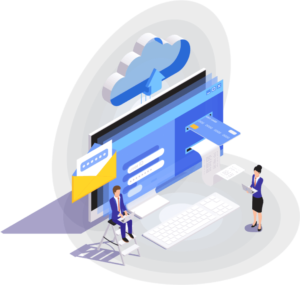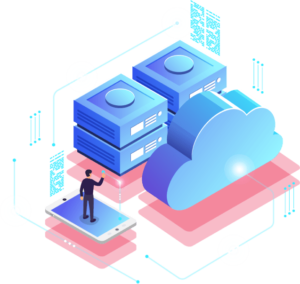Cloud FinOps
FinOps is a management practice that optimizes the financial performance of cloud computing infrastructure. FinOps promotes shared responsibility for cloud costs across IT, DevOps, and cross-functional teams to enhance decision-making and drive business value.
Implementing FinOps is crucial as cloud computing expenses become a significant operating cost for many organizations. By gaining a comprehensive understanding of cloud costs, organizations can optimize them, increase profits, and gain a competitive advantage.
A significant challenge is the wasteful expenditure of approximately one-third of cloud spend. While cloud vendors offer cost-cutting advice, it’s essential to fully grasp the variable spend model of public clouds and implement appropriate solutions. FinOps provides a way to reduce cloud waste, gain control over spending, and align cloud expenses with business goals. It fosters financial control, predictability, reduced friction, and accelerated product delivery through collaborative efforts of cross-functional teams. TechTiera offers Cloud FinOps Consulting Services to assist organizations effectively manage their cloud plans / subscriptions and cloud finances by performing cost analysis and optimization recommendations based on their cloud assessments.
- Maximize the Value of Your Cloud Adoption Journey With TechTiera’s FinOps Services
- Cost Analysis & Cost Optimization
- Gain Multi-Cloud Insights, Transparency & Visibility
- Mitigation of Financial Risks

FinOps – Empower Your Organization with Effective Cloud Cost Management
In today’s complex cloud landscape, the distributed nature of cloud technologies often leads to a lack of visibility and control over costs across different departments within an organization. To address this challenge, organizations are turning to FinOps, a powerful model that enables efficient cloud cost management.
Through the implementation of FinOps, you can unlock several benefits. Firstly, it provides you with the insights and transparency required to understand your cloud costs across various departments. This visibility empowers you to make informed business decisions, allocate resources efficiently, and identify areas where cost optimization is possible.
FinOps acts as a key enabler for building an efficient cloud cost management strategy. By adopting the FinOps model, organizations can gain visibility, empower their teams, and drive accountability for cloud spending, ultimately optimizing their cloud investments and achieving greater financial efficiency.

We bring together our deep industry knowledge and technology expertise to transform and accelerate the growth of your organization.
Scalability
TechTiera’s well-designed data engineering solutions are built to accommodate data volume and growth, ensuring effective and efficient data processing.Automation
Through the adoption of FinOps practices, organizations gain better financial governance and control over their cloud investments. This enables them to align cloud spending with business objectives, make informed decisions, and allocate resources strategically.Speed
Regardless of data volume and variety, TechTiera’s solutions prioritize speedy and efficient execution of the data engineering process.Agility
TechTiera understands and practices agility in data engineering services ensuring rapid adaptation to evolving data needs and technology, enabling businesses to stay responsive and competitive in a dynamic data landscape.Unlocking the Power of Cloud FinOps with TechTiera
At TechTiera, we bring a strategic approach and technical expertise to help organizations navigate the complexities of cloud FinOps. Our comprehensive services enable businesses to anticipate, manage, control, and optimize their cloud costs, driving financial efficiency and maximizing the value of their cloud investments.

Key Principles for Successful Cloud FinOps Execution
Team Collaboration
Effective collaboration across teams is vital to the success of your FinOps initiative. By fostering collaboration among Engineering, Finance, Application Management, Development, and Leadership teams, we create a unified approach that aligns cloud spending with business objectives.Business Value of Cloud
To amplify the business value derived from the cloud, it is crucial for organizations to measure and quantify the impact of cloud projects. Our expertise in assessing the business value helps you make data-driven decisions and prioritize investments for maximum return.Timely Reporting
Real-time access to accurate and granular data is essential for effective collaboration and accountability. We empower organizations with timely anomaly detection, comprehensive billing, and cost data at all levels, enabling informed decision-making and proactive cost management.Variable Cost of Cloud
Managing the variable cost of the cloud is critical to maintaining financial control. Our approach focuses on identifying and eliminating underutilized resources, optimizing deployed resources, and continuously improving cloud usage to optimize costs while meeting business requirements.Centralization
Centralizing key activities streamlines processes, reduces duplication, and improves efficiency. We guide organizations in centralizing activities such as cost reporting and anomaly detection, enabling a holistic view of cloud spending and facilitating better cost optimization.By embracing these core FinOps principles, organizations can achieve greater financial visibility, control, and optimization of their cloud costs. With TechTiera as your trusted partner, you can harness the power of cloud FinOps to drive financial efficiency, enhance collaboration, and unlock the full potential of your cloud investments.
Plan
The lifecycle begins with the planning stage, where organizations define their cloud cost management strategy and set clear goals and objectives. This involves understanding business requirements, estimating cloud costs, and establishing budgeting and forecasting processes.Allocate
In this stage, organizations allocate cloud costs to different departments, projects, or teams based on their resource consumption. This helps in identifying cost drivers and promotes accountability by attributing costs to the responsible parties.Monitor
The monitoring stage involves continuously tracking and analyzing cloud costs and usage data. Organizations leverage monitoring tools and technologies to gain visibility into their cloud spending patterns, identify cost anomalies, and detect opportunities for optimization.Optimize
Once cost data is analyzed, organizations can identify areas for optimization. This stage involves implementing strategies and practices to optimize cloud costs, such as rightsizing instances, leveraging reserved instances, implementing cost tags, and automating resource management.Review
Regular reviews and evaluations are essential to assess the effectiveness of cost optimization efforts. Organizations conduct cost reviews to evaluate the impact of optimization initiatives, identify areas for further improvement, and adjust their strategies accordingly.Collaborate
Collaboration is a key aspect of the FinOps lifecycle. This stage involves fostering collaboration and communication among cross-functional teams, including Engineering, Finance, Operations, and Development. Collaborative efforts ensure alignment between business objectives and cloud spending decisions.Educate
Collaboration is a key aspect of the FinOps lifecycle. This stage involves fostering collaboration and communication among cross-functional teams, including Engineering, Finance, Operations, and Development. Collaborative efforts ensure alignment between business objectives and cloud spending decisions.Govern
The governance stage focuses on establishing policies, processes, and controls to ensure compliance, security, and accountability in cloud cost management. This includes defining roles and responsibilities, implementing cost governance frameworks, and aligning with industry best practices and regulatory requirements.By following the FinOps lifecycle, organizations can continuously improve their cloud cost management practices, optimize spending, and achieve financial efficiency in their cloud adoption journey. TechTiera provides expertise and support throughout the FinOps lifecycle, helping organizations maximize the value of their cloud investments while maintaining cost control and optimization.
Adopting a “Crawl, Walk, Run” approach in implementing FinOps enables companies to begin with smaller initiatives and gradually expand in scale, scope, and complexity as their functional activities mature.
Key FinOps Metrics and Performance Indicators
In line with the wisdom of influential and renowned management consultant Peter Drucker, it is crucial to establish metrics and key performance indicators (KPIs) to effectively manage and monitor cloud resources. These metrics and KPIs serve as measurable benchmarks for evaluating cloud resource usage and optimization.
Consider the following key metrics for achieving success in FinOps:
Metrics for Resource Optimization
- Actual vs. Budget Per Service
- Percentage of Underutilization of Services
- Spend Per Application
- Metrics for Pricing Optimization:
KPIs for Cloud Optimization
- Rightsizing Savings Percentage
- Effective Cost Per Resource
- Number of Security Lapses in a Month
Cloud Visibility KPIs
- Percentage of Environment With Tagging in Place
- Percentage of Bill From Untagged Resources
- Percentage of Revenue Spent on the Cloud
Committed Use Discount (CUDs)
- Preemptible Instance Coverage Ratios
- Idle On-demand Resource Ratios
- Once these metrics are implemented, it becomes possible to establish advanced KPIs.
Key KPIs to Consider
- Savings Plan Coverage
- Rightsizing Opportunity Value
- Usage on Weekends vs. Weekdays
TechTiera for FinOps:



